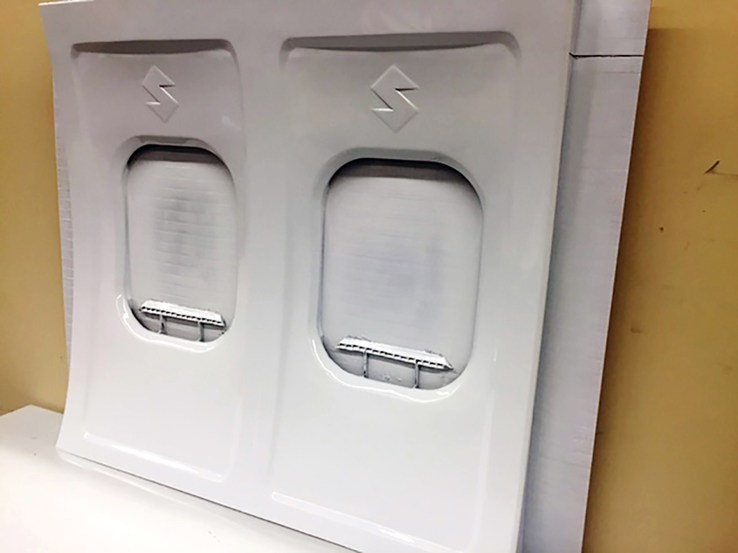
Charles L. “Chuck” Harrington is chairman and CEO of Parsons, a Pasadena-based technology-driven engineering services firm with more than 70 years of experience in the engineering, construction, technical and professional services industries.
How to join the networkMuch anticipation has been built around the future of the automotive and aerospace industries in the wake of recent advancements in 3D-printing technologies. But what’s often overlooked is the way 3D printing can also revolutionize the transportation infrastructure industry.
Take for example the new technologies Stratasys demonstrated for the first time at the 2016 International Manufacturing Technology Show in Chicago. One of the company’s new technologies is an “Infinite-Build” system that’s designed to print parts on a vertical plane, essentially making it possible to print parts of virtually any size.
While the “Infinite-Build” technology is primarily aimed at the aerospace and automotive industries — as evidenced by the partnerships Boeing and Ford have both formed with Stratasys — the concept could also transform the infrastructure industry, especially when you consider bridges require much longer parts to construct than, say, a car or plane.
Still, much more research and development must be completed before we can realistically expect to “print” any bridges with additive manufacturing. One particular challenge is figuring out how to embrace these advancements in technology and evolve them to include the materials required for large-scale structures. Specifically, we must determine how to accommodate concrete and steel, the basic materials we use to construct roads and bridges.
Today’s infrastructure challenge lies in bridging today’s needs with tomorrow’s possibilities.
We are already starting to see new variations of concrete being developed, which perhaps could be more amenable to 3D-printing capabilities. Indeed, a type of concrete that cures instantly — and has the strength and stiffness required to meet bridge design codes without rebar — will be key. I had the opportunity to learn from a student at Cal Poly San Luis Obispo of a 3D printer that printed in chocolate. The biggest challenge that had to be solved was instantaneous hardening or curing. Although different curing processes, it reinforces the point that “where there’s a will, there’s a way.”
The benefits 3D printing could bring to the infrastructure industry are too significant to be overlooked, especially when roughly 75 percent of the infrastructure — our roads, bridges and tunnels — in the United States will either need to be renovated or rebuilt in their entirety by 2035, according to the Rockefeller Foundation.
Today’s infrastructure challenge lies in bridging today’s needs with tomorrow’s possibilities. If utilized well, additive manufacturing would improve precision and quality control while reducing waste, costs and congestion during infrastructure construction projects.
Think about the number of traffic lanes that are often closed during large-scale construction projects to accommodate the movement of massive construction materials. With 3D printing, you would be able to go on site and print large-scale structural components of transportation infrastructure in more confined spaces. This would translate to less interruption to commuters.
Related Articles
3D Systems outlines plans to shift 3D printing from prototype to productionMetal 3D printing takes flightThis machine 3D prints metal structures in midair by lasering nanoparticlesHershey's Chocolate 3D Printer Whips Up Any Sweet Design You WantWhat’s more, 3D printing would also drastically reduce the amount of wasted materials. That’s because additive manufacturing makes it possible to use no more than the exact amount of materials necessary per project. Plus, whatever surplus of raw materials is left over could then be used for another construction project.
Safety is another major potential benefit of using 3D printing to build infrastructure. On sites that are particularly difficult to access, autonomous 3D printing would ideally eliminate the need to have work crews situated in precarious positions during construction. That alone is a significant benefit.
There is tremendous potential for 3D printing to revolutionize the way our infrastructure is built in the future. But in order to achieve this potential, there must be collaboration and further innovation of the engineering, construction, materials, technology and financial industries — in addition to leadership of federal, provincial and local governments.
Featured Image: JOHN BIERS/AFP/Getty Images
No comments:
Post a Comment